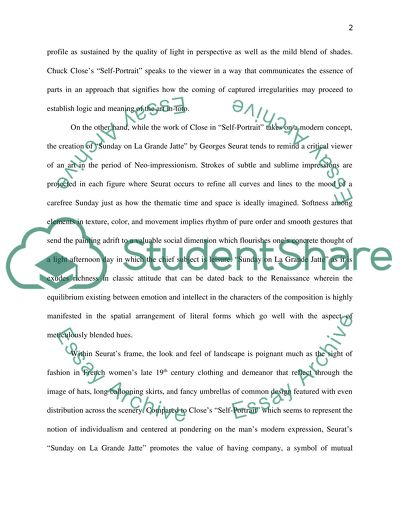Cite this document
(“Self-Portrait by Chuck Close and Sunday on La Grande Jatte by Georges Research Paper”, n.d.)
Self-Portrait by Chuck Close and Sunday on La Grande Jatte by Georges Research Paper. Retrieved from https://studentshare.org/visual-arts-film-studies/1456453-self-portrait-by-chuck-close-and-sunday-on-la-grande-jatte-by-georges-seurat
Self-Portrait by Chuck Close and Sunday on La Grande Jatte by Georges Research Paper. Retrieved from https://studentshare.org/visual-arts-film-studies/1456453-self-portrait-by-chuck-close-and-sunday-on-la-grande-jatte-by-georges-seurat
(Self-Portrait by Chuck Close and Sunday on La Grande Jatte by Georges Research Paper)
Self-Portrait by Chuck Close and Sunday on La Grande Jatte by Georges Research Paper. https://studentshare.org/visual-arts-film-studies/1456453-self-portrait-by-chuck-close-and-sunday-on-la-grande-jatte-by-georges-seurat.
Self-Portrait by Chuck Close and Sunday on La Grande Jatte by Georges Research Paper. https://studentshare.org/visual-arts-film-studies/1456453-self-portrait-by-chuck-close-and-sunday-on-la-grande-jatte-by-georges-seurat.
“Self-Portrait by Chuck Close and Sunday on La Grande Jatte by Georges Research Paper”, n.d. https://studentshare.org/visual-arts-film-studies/1456453-self-portrait-by-chuck-close-and-sunday-on-la-grande-jatte-by-georges-seurat.


